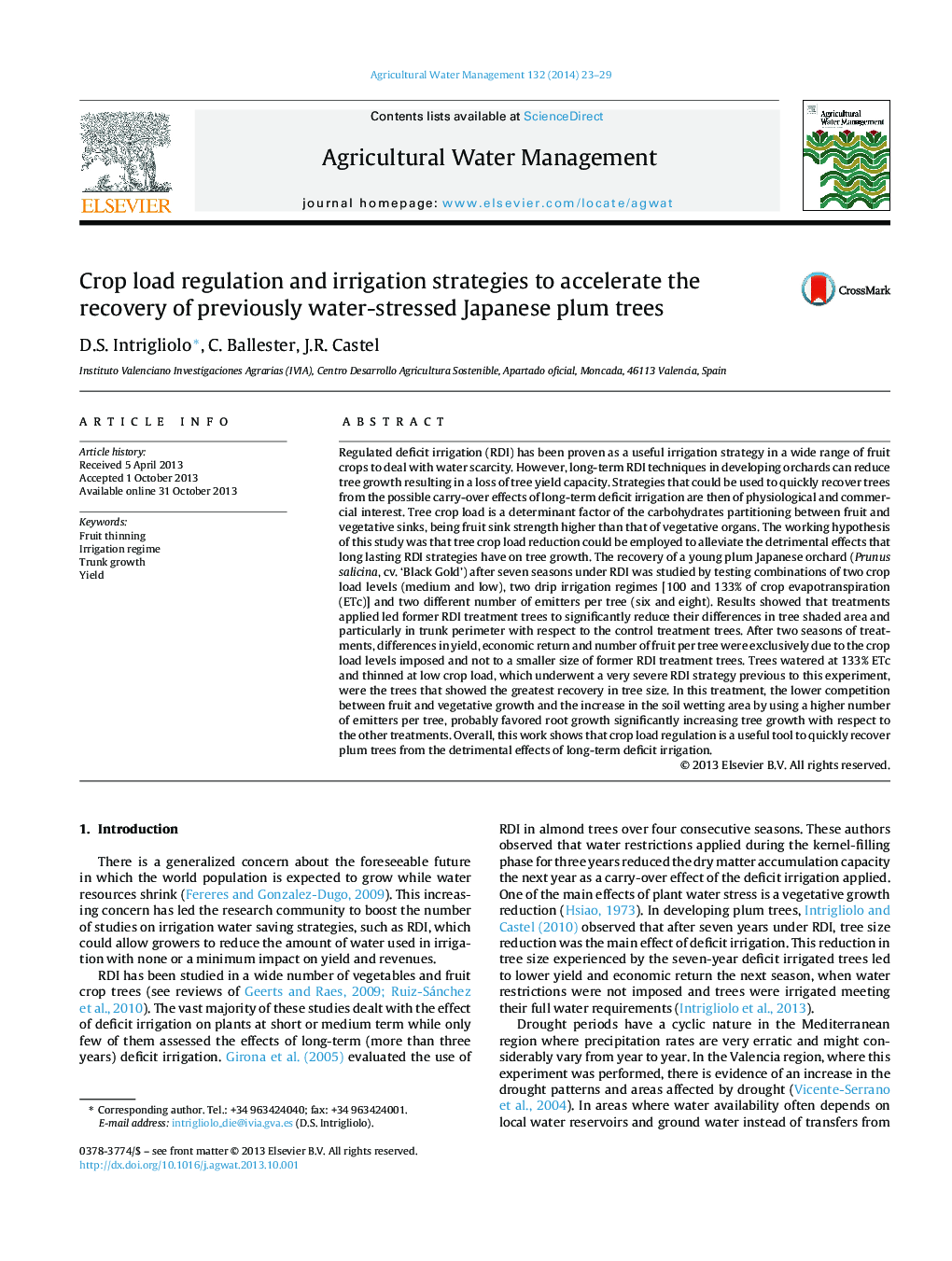| کد مقاله | کد نشریه | سال انتشار | مقاله انگلیسی | نسخه تمام متن |
|---|---|---|---|---|
| 4478777 | 1622947 | 2014 | 7 صفحه PDF | دانلود رایگان |
• Strategies to quickly recover long-term deficit irrigated trees were tested in plum.
• Crop load and irrigation regime were adjusted to favor tree development.
• Former RDI trees reduced their differences in tree growth with respect to control trees.
• Low crop load and an increase in wetted soil volume was the best recovery strategy.
Regulated deficit irrigation (RDI) has been proven as a useful irrigation strategy in a wide range of fruit crops to deal with water scarcity. However, long-term RDI techniques in developing orchards can reduce tree growth resulting in a loss of tree yield capacity. Strategies that could be used to quickly recover trees from the possible carry-over effects of long-term deficit irrigation are then of physiological and commercial interest. Tree crop load is a determinant factor of the carbohydrates partitioning between fruit and vegetative sinks, being fruit sink strength higher than that of vegetative organs. The working hypothesis of this study was that tree crop load reduction could be employed to alleviate the detrimental effects that long lasting RDI strategies have on tree growth. The recovery of a young plum Japanese orchard (Prunus salicina, cv. ‘Black Gold’) after seven seasons under RDI was studied by testing combinations of two crop load levels (medium and low), two drip irrigation regimes [100 and 133% of crop evapotranspiration (ETc)] and two different number of emitters per tree (six and eight). Results showed that treatments applied led former RDI treatment trees to significantly reduce their differences in tree shaded area and particularly in trunk perimeter with respect to the control treatment trees. After two seasons of treatments, differences in yield, economic return and number of fruit per tree were exclusively due to the crop load levels imposed and not to a smaller size of former RDI treatment trees. Trees watered at 133% ETc and thinned at low crop load, which underwent a very severe RDI strategy previous to this experiment, were the trees that showed the greatest recovery in tree size. In this treatment, the lower competition between fruit and vegetative growth and the increase in the soil wetting area by using a higher number of emitters per tree, probably favored root growth significantly increasing tree growth with respect to the other treatments. Overall, this work shows that crop load regulation is a useful tool to quickly recover plum trees from the detrimental effects of long-term deficit irrigation.
Journal: Agricultural Water Management - Volume 132, 31 January 2014, Pages 23–29
